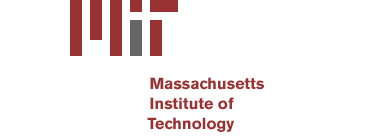Research On The Floating Airport
Cities
Tourism Proposal
Bamboo Flooring Proposal
Paint Proposal
Eco friendly Cleaners Proposal
Lighting Proposal
Tissue Products Proposal
Catalog Proposal
Research On The Floating
Airport
Mega-Float
Structural Engineering
Cities
"Systems that import raw materials to fuel a 'metabolism' that exports goods and waste"
Tourism Proposal
What:
Tourism in the eco village will be addressed in a variety of ways. There will be tours of the eco village, an informational center, the opportunity to live with a native, education, and a gift shop.
A variety of tours of the eco village will be offered. People will be able to take a general tour of the eco village during which they will learn a little about the history of the Galapagos Islands and of the eco village, how the eco village was constructed, the methods of cohousing and of eco friendly living and about the daily life of the village’s inhabitants. Each tour will be able to enjoy a native lunch. Inhabitants of the Islands will cook for the tour members so that the tourists can be exposed to native cooking methods and to native food. Tours will be offered in both English and Spanish and a certified tour guide will accompany all of the tour groups.
Currently, there is an Interpretation Center in Puerto Baquerizo Moreno. This serves as an information center to answer people’s questions, to give visitors maps of the area and to provide information on the history of the Islands. Two more of centers similar to the Interpretation Center on Puerto Baquerizo Moreno will be built in Puerto Ayora and Puerto Villamil. Also, a movie will be available at these centers to offer people a visual of the Galapagos Islands and of the construction process of the villages.
Tourists will be encouraged to stay with the natives in their homes when they come to the Islands. They will also be able to stay in the guest rooms that are located in the common houses of each smaller community. Natives must volunteer to host a tourist and will be taught how to interact with them. The natives will also be paid to host visitors.
Education will be available in two forms (other than the tours that will be offered, the information centers, the books that will be sold in the gift shop). Weekly workshops will be offered to tourists during the summer months. These workshops will specialize in home building, farming, arts and crafts, and cooking. The second opportunity for education will be offered in the form of internships. Visitors will be able to partake in internships in which they will “shadow” the natives in their jobs to learn more about what they do and about their way of life.
Lastly, the gift shop will sell a variety of books about the Galapagos Islands in general, the history of each eco village, and the ideas behind eco friendly living. Natives will also be able to sell the foods they grow and any crafts they make in the gift shop.
Why:
The tours will mainly serve as an educational tool. Outsiders can learn about the ways of each eco village and can learn how to better live without hurting the environment. Also, people will not only learn about eco friendly living in general but about the lifestyle that is specific to the Galapagos Islands. Native food will be offered to expose people to the culture and give them a more intimate experience of the Islands. Tours will be offered in two languages to accompany both the foreigners and people from mainland Ecuador.
The information centers will serve as a central location to which people can go to get all of their questions answered. The centrality of the information will make it easy for people to acquire information so that they will want to acquire it. Also, it will make the information accessible for those who do not care to take the tour but who still want to learn the information. The center will be situated in a place to which the visitors will first come when they enter the city. This way the least amount of damage will be done to the Islands and to the eco villages because the visitors will know what they can and cannot do.
The main purpose of the home stay is to give visitors the most realistic image and experience of the Galapagos. The way to best accomplish this is to give visitors the chance to immerse themselves in the culture and the daily life. In this way, the visitors can learn from the natives and the natives can learn from the visitors.
The workshop is another way to educate visitors and a way to promote the interaction between the foreigners and the natives. It is important to learn about different styles of living and participating in the workshops will inform people of this. Also, the workshops and internships will promote interest in the Islands.
The gift shop will be yet another form of education. It will also provide a place for the natives to sell their goods. This will promote the formation of an internal economy while at the same time giving visitors a place to buy things to remind them of their trip.
Bamboo Flooring Proposal
What: Formaldehyde-free bamboo flooring supplied by Bamboo Hardwoods (Distributor: Mari Strain, Berkeley, CA (510-548-4914) Website: www.bamboohardwoods.com)
Why: Bamboo has minimal impact on the environment. It re-grows in about three and a half to seven years compared to the 120 years it takes Oak Trees to re-grow. It also produces twice as much fiber as does a pine tree. Using Bamboo reduces the need to use virgin lumber, which reduces the need to harvest lumber using clear cut methods. Bamboo is easy to maintain and it is attractive. It comes in a variety of pre-finished colors such as natural, amber and cherry, and it also accepts stains, making it easy to blend and match to other colors. Bamboo is also very strong. Tests have been done that show that it resists dents to a ball being dropped better than oak resists dents and that it is as hard as maple wood. This type of flooring helps to control erosion because the rhizome web keeps riverbanks from falling wearing down. Bamboo flooring can easily be installed by nailing or gluing it down.
Why Better: Another type of flooring that could be used is cork flooring. However, this choice is not as good as bamboo because cork is damaging to the environment. When the trees are stripped of their cork, they are more susceptible to environmental damage. A second type other than bamboo flooring is natural linoleum. This is good because there are no pollutants associated with it and that is lasts a long time. However, it produces “off gas” that can be harmful and it cannot be exposed to constant moisture. Since it cannot be exposed to constant moisture, this type of flooring would not be a good choice for the Galapagos communities because they are located along the water.
Paint Proposal
What: Milk Paint (for the interior from the Old-Fashioned Milk Paint Company; Phone Number :978-448-6336; Website: www.milkpaint.com)
Why: This organic paint is milk-based, has natural pigments, and all of the ingredients can be used in food and pharmaceuticals. It is safe for people and the environment since all of the ingredients are edible and biodegradable. This paint is free of solvents, harmful poisons, strong odor, volatile organic compounds (voc's), and harmful air pollutants. It is antibacterial and non-flammable and dries quickly. This paint can be used on cabinets, floors, furniture, walls, and woodwork. It penetrates porous surfaces well.
Why Better: Milk paint is the best choice for interior paint because it is the only paint that does not contain any VOC’s. Other companies such as Benjamin Moore, Glidden, Kelly Moore, and Sherwin Williams make paints that have low VOC levels but no VOC levels is better than low. There is one company, American Formulating Manufacturing, which makes formaldehyde free paints. However, this can only be used for wood and cannot be applied in direct sunlight. Milk paint is more versatile and does not need to only be used on wood. Also, the Galapagos Islands is a sunny environment and the application of the product from American Formulating Manufacturing would be difficult to apply.
Eco friendly Cleaners Proposal
What: Eco friendly Cleaners (vinegar, baking soda, corn starch, salt, borax, lemon juice, olive oil, mild liquid soap, reusable steel wool that do not contain toxic cleaners, and non-chlorine scouring powder.
All-purpose cleaner:
2 Tablespoons of baking soda
1 pint warm water
Lemon juice or vinegar to cut the grease
Surface cleaner:
1-quart hot water
1-teaspoon oil based soap or vegetable oil-based detergent
1-teaspoon borax (acts as a water softener)
Vinegar to cut the grease
Surface cleaner 2:
½ cup vinegar
1-quart warm water
Surface cleaner 3:
Dissolve baking soda in hot water
Scrubbing paste:
Baking soda
Liquid soap
Window cleaner:
¼ cup white vinegar
1-tablespoon cornstarch
1-quart warm water
Oven Cleaner:
1 part vinegar to 4 parts water
Why: Eco friendly cleaners are less polluting to make, less likely to hurt someone if they are ingested and do not pollute indoor air. These eco friendly cleaners are less expensive and will not harm the environment after they are used.
Why Better: The combination of cleaners listed above is much better for the environment than cleaners that are usually used such as: Lysol, Windex and Pine Sol. They are also much less expensive than the commercial name brand products and are much less polluting to manufacture.
Lighting Proposal
What: Compact Fluorescent Lighting (from GE Lighting (1-800-626-2004), Lights of America (1-909-594-7883), Link USA (1-800-224-4228), MaxLite SK America, Inc (1-800-555-5629), Panasonic Lighting (1-201-348-5381), and ProLight (1-800-968-2556)
Why: The quality of lighting is the same quality that the incandescent lighting provides but it saves from 50-80% of the energy costs. This light bulb lasts eight to ten times as long as an incandescent light bulb. It is also about three to four times more efficient than incandescent bulbs.
Why Better: Compact fluorescent lighting is much better than using incandescent lighting. It can save consumers 50-80% of energy costs and it lasts eight to ten times longer. Compact Fluorescent Lighting is three to four times more efficient than incandescent lighting. As a result of the higher efficiency, less carbon dioxide is released into the atmosphere. This is because it takes less energy to run a compact fluorescent light bulb than in does to run an incandescent light bulb for the same amount of time. About 2.5 pounds of carbon dioxide is released to generate one kilowatt-hour of energy so since the compact fluorescent light bulb can produce this energy for a longer time, it will release less carbon dioxide.
Tissue Products Proposal
What: Green Seal approved bathroom tissue products (from Javitis-Wagner- O’Day Program c/o National Industries for the Blind (1-800-433-2304; website: http://www.jwod.com) or from Bay West Paper (1-877-907-2737; website: http://www.baywestpaper.com)
Why: The Paper Towel, C-fold produced by Javitis Wagner-O’Day Program c/o National Industries for the Blind is 100% recycled and is 90% post consumer recycled. The bleaching process is chlorine free and the paper towels, along with their packaging, is free of toxins.
The EcoSoft Green Seal Bathroom Tissue by Bay West Paper is 100% recycled and is 49% post consumer recycled. The bleaching process is chlorine free and the tissue along with its packaging is free of toxins.
Why Better: Other possible tissue manufacturers include Marcal Paper Mills, Cascades Tissue Group, Earth Friendly Products, and Kimberly-Clark Worldwide, Inc. These companies are inferior to Bay West Paper and to Javitis Wagner-O’Day Program c/o National Industries for the Blind because they do not sell products that are certified to Green Seal’s environmental standards. The Green Seal certification requires that packaging be free of toxins (including lead, mercury, and cadmium). The products that are certified by Green Seal are much better for the environment than products that are not certified by the Green Seal.
Catalog Proposal:
Part of our goal of the eco village is to stabilize and strengthen the local economy. As part of the shift towards the development of a self-sustaining community, imports to the islands must be reduced. Reducing imports will help to minimize the competition that natives feel from producers on the mainland. This effect will stabilize the economy on the Galapagos Islands. Although the inhabitants can produce many of the supplies that are needed on a daily basis, certain goods must still be purchased off of the islands. To take advantage of the inability for the people to produce all of the goods that they need, we propose that the people of the Galapagos Islands first turn to Ecuador (versus the United States or another country) to purchase the products that they cannot produce on the Islands.
There are multiple resources that could provide products for people on the Galapagos Islands. The most reliable option would be the Andean tribes. There are many Andean tribes who depend upon the production of many products that are difficult to produce on the Galápagos Islands in order to survive. Examples of such products include wall hangings, floor covering, dishes, baskets and clothing. These communities earn an income by using methods that have been part of their culture since its beginning to produce a range of products for other people in the area. Linking the Galapagos Islands to these Andean tribes would reduce the dependence the residential population has on the natural environment on the Islands.
Buying directly from an Andean tribe has many benefits. Purchasing products from an Andean tribe or a cooperative such as Killari will ensure that the producers receive a just price for their work and that the buyers pay a reasonable price for the product. Also, buying from these Andean tribes will provide the Islanders with a reliable source from which to purchase products in the future. Each Andean tribe produces a limited range of goods but by bringing the tribes together, a wide variety of products can be made available. This relationship with the Andean tribes would establish a mutually beneficial exchange between the indigenous peoples on mainland Ecuador and the residents of the Galapagos Islands. Stimulating the relationship between mainland Ecuador and the Galapagos will correct the misconception that the Galapagos Islands does nothing to help the local people.
Another option would be to link a village that is presently fighting to maintain its identity and autonomy with the Galapagos Islands. An example of such a group is a tribe that feels pressure to burn down the rainforest so that it has enough land on which to farm and raise themselves. We could support a group like this and, through the biopreserve, offer them a sustainable way of living. This would directly benefit groups off if the Galapagos Islands that have not been able to invest in sustainable living and the Galapagos Islands would also benefit.
Buying products in bulk from Ecuador has many advantages. It will provide the Island residents with an affordable way to buy goods that are made in a sustainable manner. It is our hope that the Biopreserve will facilitate this relationship with the mainland and that it will provide outside help to teach the Galapagos residents about the need for conservation and sustainable living. It will also improve people’s sense of connection to the mainland and provide them with an economically accessible source for goods. This will ensure that there is general equality within the community and will foster the feeling that no one person is better than another. Doing this will create an atmosphere in which everyone feels equal and maintaining equality is an integral part of a close-knot community that works together.
The market in Ecuador is limited when it comes to technology and appliances. This is why we have looked into using products from the United States. A list of reputable companies that sell eco friendly products can be found in the following text. It is our hope that if such appliances were needed in the community (most likely in the common house or in restaurants) that these companies would be willing to supply them to the Galapagos Islands or would offer them to us for a significantly reduced price.
Ecuador Companies
Artesta: Arte en Ceramica (Website: http://www.cuencanet.com/ceramics/)
• Bowl Set

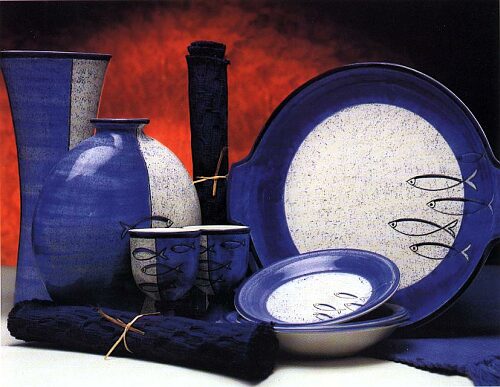


Capeipi (Website: http://www.capeipi.com/s_maderero.asp)
• Wood products
Camari (Website: http://www.camari.org)
• Drink Stirrers
-The stirrers are made by hand out of coconut. There are six in a set and a set costs $6.51.

• Pumice Exfoliators
-The exfoliators are made by hand and can be used to smooth rough skin. They come in a variety of shapes and cost anywhere from $.056 to $.99.

Ecuamueble (Website: http://www.cuencanet.com/ecuamueble/)
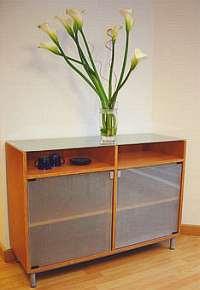
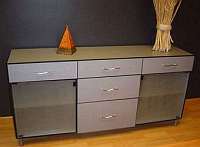
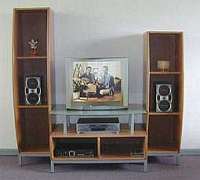
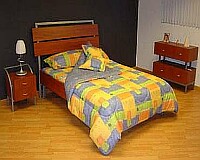
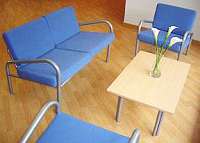
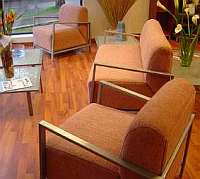

Sinchi Sacha Foundation: Peoples of the Americas (Website: http://www.ecuadorexplorer.com/sinchisacha/html/market.html)

United States Companies and Suppliers
Comet (Website: http://www.comet.co.uk/comet/html/cache/ecometHome.html)
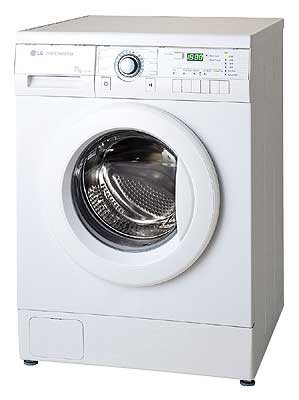
Equator (Website: http://www.equatoronline.com/combowashers.asp )

Fisher&Paykel: The Innovators (from New Zealand, not the United States)

Contact Information: Nigel Ball (Marketing Manager for Fisher and Paykel)
Private Bag 500033
Mosgiel, Dunedin
New Zealand
Phone: 64 3 489 3819
Email: Nigel.ball@fp.co.nz
Website: www.fp.co.nz
GreenSage.com (Website: http://greensage.com)





MCS (Website: http://www.mcs-oss.it/uk/bakemaster.html)
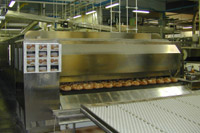
Whirlpool (Website: http://www.whirlpool.com/catalog/product.jsp?src=MICROWAVES&categoryId=90&productId=430)

Home
Mega-Float
- Floating airport in Yokosuka Bay, Japan
- Structure
- Main floating body
- 9 total floating bodies
- Mooring unit
- Fender-type mooring dolphin
- Access route to land
- Elastic behavior
- Advantages
- Easy to build artificial land
- Isolates earthquake motion
- Ecofriendly
- Able to be constructed at a low cost
- Able to be constructed in a short amount of time
- Challenges
- Thermal deformation
- Wave induced motion (irrelevant for the Galapagos because the waves are not that big)
- Welding steel in a marine environment
- Solutions have been found to this challenges
- Durability
- 100 years
- Corrosion resistance
- Titanium cladding of splash zones
- Maintenance
- Monitoring system of the steel welds was developed
Structural Engineering
- Designs for the future
- Natural evolution
- Old methods
- Address changes in building performances and building's needs
- Address the relationship between form and climatic forces
- Forces interact with one another and form a system in which one part effects the whole
- Climatic Forces
- Gravity
- Interior ventilation
- Wind
- Power
- Accelerate the wind between buildings to be received by a turbine in the service core-->power and energy
- Ventilation
- Self sustainable
- Sound
- Light
- Solar Radiation
- Infra-red
- Transparent materials
- Reflect radiation
- Opaque materials
- Absorb Radiation
- Shading devices
- Reflect radiation
- Absorb radiation and re-radiate it
- Fixed horizontal shades
- Fixed vertical shades
- Moveable horizontal louvres
- Moveable vertical blinds
- Solar Absorption
Cities
"Systems that import raw materials to fuel a 'metabolism' that exports goods and waste"
- Two Processes
- Linear
- Input=output+waste
- Will reach a capacity
- High water usage
- Polluted water
- Discards the water waste
- Produces toxic fumes that pollute the environment
- Building materials are wasted
- Trees are not replanted
- Cyclical
- Produces feedback loops and recycles waste
- Low water usage
- Water is treated and recycled
- Wastes are reused for fertilizer, heating and energy
- Fossil fuels are used efficiently
- Building materials are recycled
- Trees are replanted
- Factors to Consider
- Climate (solar temperature, humidity, precipitation, wind)
- Geology (site conditions, materials, resources, topology)
- Location
- Economics of the country
- Sustainable
- Cyclical Process
- Need to find a way to improve the efficiency of the import and export cycles
- Need to design from the micro level (small: i.e.: buildings) and from the macro level (large: i.e.: street layout) at the same time
- Need to regulate the amount of energy per building plot
- Need to set strict guidelines
- Cycles of a city
- Transportation
- Sustainable: "aids the mobility of one generation without comprising the mobility of future generations"
- Hierarchy
- People
- Bike
- Bus
- tram
- Light rail transport
- Cars
- Monorail
- Fast
- Far distances between stops
- Need supplemental transportation for the "in between" distances (i.e.: taxis)
- Trolley Bus
- Slower
- Frequent stops
- Do not need supplemental transportation
- Cars
- Bad
- Inner city deterioration
- Accidents
- Pollutes the air
- Noisy
- Control
- Set up an environment that does not cater towards cars
- Few parking spaces
- Roads that are better suited towards pedestrians, bikes, and mass transit
- Reduce the appeal of cars
- Mass transit
- Inexpensive
- Easy
- Efficient
- High quality
- Walking Routes
- Scenic views
- Shaded
- Protection from the rain and wind
- Energy
- Goal
- Reduce the demand of energy
- Provide the energy from renewable resources
- Self-sustaining/self-sufficient
- Types
- Gas
- Not sustainable
- Oil
- Not sustainable
- Electricity
- Typical
- Combustion of oil, gas, and coal
- Ecofriendly
- Combustion of renewable resources
- Biomass
- Plant materials grown for energy production
- Requires little skill
- Inexpensive
- Quickly implemented (one to two years)
- Organic wastes made from the city
- Solar energy
- Photovoltaic
- Converts sunlight into electricity
- Expensive
- Inefficient
- Solar Thermal
- Uses solar energy to heat water which produces
steam to power a turbine
- Wind turbines
- Makes everything electric
- Efficiency
- 30% efficient without using the wasted heat
- 85% efficient using the wasted heat
- Winter heating
- Hot water supply
- Drive absorption cooling machines
- Uses
- Buildings
- Transportation
- Industry
- Ecofriendly buildings
- Natural ventilated
- Day lit
- Limited air conditioning
- Heated with solar energy
- Efficient cooling and ventilation systems
- Effective orientation on the land
- Effective use of materials
- Water
- Ecofriendly
- Self-sufficient
- Reduce the demand
- Efficient collection and storing methods
- Recycle the wasted water
- Need precipitation and evaporation data
- Waste
- Types
- Human effluent
- Uses
- Gas for heating and cooling
- Sludge composition
- Water landscape
- Bio-degradable/combustible (paper, vegetable materials)
- Uses
- Power
- Heat
- Compost
- ash
- Road construction aggregate
- Non-combustible (metals, glass)
- Recycled
- Toxic
- Needs to be reprocessed and dealt with off site
- Micro climate, landscape, and ecology
- Materials, construction and building
- QuReplenishable
- Able to be replenished
- Low embodied energy
- Recyclable
Tourism Proposal
What:
Tourism in the eco village will be addressed in a variety of ways. There will be tours of the eco village, an informational center, the opportunity to live with a native, education, and a gift shop.
A variety of tours of the eco village will be offered. People will be able to take a general tour of the eco village during which they will learn a little about the history of the Galapagos Islands and of the eco village, how the eco village was constructed, the methods of cohousing and of eco friendly living and about the daily life of the village’s inhabitants. Each tour will be able to enjoy a native lunch. Inhabitants of the Islands will cook for the tour members so that the tourists can be exposed to native cooking methods and to native food. Tours will be offered in both English and Spanish and a certified tour guide will accompany all of the tour groups.
Currently, there is an Interpretation Center in Puerto Baquerizo Moreno. This serves as an information center to answer people’s questions, to give visitors maps of the area and to provide information on the history of the Islands. Two more of centers similar to the Interpretation Center on Puerto Baquerizo Moreno will be built in Puerto Ayora and Puerto Villamil. Also, a movie will be available at these centers to offer people a visual of the Galapagos Islands and of the construction process of the villages.
Tourists will be encouraged to stay with the natives in their homes when they come to the Islands. They will also be able to stay in the guest rooms that are located in the common houses of each smaller community. Natives must volunteer to host a tourist and will be taught how to interact with them. The natives will also be paid to host visitors.
Education will be available in two forms (other than the tours that will be offered, the information centers, the books that will be sold in the gift shop). Weekly workshops will be offered to tourists during the summer months. These workshops will specialize in home building, farming, arts and crafts, and cooking. The second opportunity for education will be offered in the form of internships. Visitors will be able to partake in internships in which they will “shadow” the natives in their jobs to learn more about what they do and about their way of life.
Lastly, the gift shop will sell a variety of books about the Galapagos Islands in general, the history of each eco village, and the ideas behind eco friendly living. Natives will also be able to sell the foods they grow and any crafts they make in the gift shop.
Why:
The tours will mainly serve as an educational tool. Outsiders can learn about the ways of each eco village and can learn how to better live without hurting the environment. Also, people will not only learn about eco friendly living in general but about the lifestyle that is specific to the Galapagos Islands. Native food will be offered to expose people to the culture and give them a more intimate experience of the Islands. Tours will be offered in two languages to accompany both the foreigners and people from mainland Ecuador.
The information centers will serve as a central location to which people can go to get all of their questions answered. The centrality of the information will make it easy for people to acquire information so that they will want to acquire it. Also, it will make the information accessible for those who do not care to take the tour but who still want to learn the information. The center will be situated in a place to which the visitors will first come when they enter the city. This way the least amount of damage will be done to the Islands and to the eco villages because the visitors will know what they can and cannot do.
The main purpose of the home stay is to give visitors the most realistic image and experience of the Galapagos. The way to best accomplish this is to give visitors the chance to immerse themselves in the culture and the daily life. In this way, the visitors can learn from the natives and the natives can learn from the visitors.
The workshop is another way to educate visitors and a way to promote the interaction between the foreigners and the natives. It is important to learn about different styles of living and participating in the workshops will inform people of this. Also, the workshops and internships will promote interest in the Islands.
The gift shop will be yet another form of education. It will also provide a place for the natives to sell their goods. This will promote the formation of an internal economy while at the same time giving visitors a place to buy things to remind them of their trip.
Bamboo Flooring Proposal
What: Formaldehyde-free bamboo flooring supplied by Bamboo Hardwoods (Distributor: Mari Strain, Berkeley, CA (510-548-4914) Website: www.bamboohardwoods.com)
Why: Bamboo has minimal impact on the environment. It re-grows in about three and a half to seven years compared to the 120 years it takes Oak Trees to re-grow. It also produces twice as much fiber as does a pine tree. Using Bamboo reduces the need to use virgin lumber, which reduces the need to harvest lumber using clear cut methods. Bamboo is easy to maintain and it is attractive. It comes in a variety of pre-finished colors such as natural, amber and cherry, and it also accepts stains, making it easy to blend and match to other colors. Bamboo is also very strong. Tests have been done that show that it resists dents to a ball being dropped better than oak resists dents and that it is as hard as maple wood. This type of flooring helps to control erosion because the rhizome web keeps riverbanks from falling wearing down. Bamboo flooring can easily be installed by nailing or gluing it down.
Why Better: Another type of flooring that could be used is cork flooring. However, this choice is not as good as bamboo because cork is damaging to the environment. When the trees are stripped of their cork, they are more susceptible to environmental damage. A second type other than bamboo flooring is natural linoleum. This is good because there are no pollutants associated with it and that is lasts a long time. However, it produces “off gas” that can be harmful and it cannot be exposed to constant moisture. Since it cannot be exposed to constant moisture, this type of flooring would not be a good choice for the Galapagos communities because they are located along the water.
Paint Proposal
What: Milk Paint (for the interior from the Old-Fashioned Milk Paint Company; Phone Number :978-448-6336; Website: www.milkpaint.com)
Why: This organic paint is milk-based, has natural pigments, and all of the ingredients can be used in food and pharmaceuticals. It is safe for people and the environment since all of the ingredients are edible and biodegradable. This paint is free of solvents, harmful poisons, strong odor, volatile organic compounds (voc's), and harmful air pollutants. It is antibacterial and non-flammable and dries quickly. This paint can be used on cabinets, floors, furniture, walls, and woodwork. It penetrates porous surfaces well.
Why Better: Milk paint is the best choice for interior paint because it is the only paint that does not contain any VOC’s. Other companies such as Benjamin Moore, Glidden, Kelly Moore, and Sherwin Williams make paints that have low VOC levels but no VOC levels is better than low. There is one company, American Formulating Manufacturing, which makes formaldehyde free paints. However, this can only be used for wood and cannot be applied in direct sunlight. Milk paint is more versatile and does not need to only be used on wood. Also, the Galapagos Islands is a sunny environment and the application of the product from American Formulating Manufacturing would be difficult to apply.
Eco friendly Cleaners Proposal
What: Eco friendly Cleaners (vinegar, baking soda, corn starch, salt, borax, lemon juice, olive oil, mild liquid soap, reusable steel wool that do not contain toxic cleaners, and non-chlorine scouring powder.
All-purpose cleaner:
2 Tablespoons of baking soda
1 pint warm water
Lemon juice or vinegar to cut the grease
Surface cleaner:
1-quart hot water
1-teaspoon oil based soap or vegetable oil-based detergent
1-teaspoon borax (acts as a water softener)
Vinegar to cut the grease
Surface cleaner 2:
½ cup vinegar
1-quart warm water
Surface cleaner 3:
Dissolve baking soda in hot water
Scrubbing paste:
Baking soda
Liquid soap
Window cleaner:
¼ cup white vinegar
1-tablespoon cornstarch
1-quart warm water
Oven Cleaner:
1 part vinegar to 4 parts water
Why: Eco friendly cleaners are less polluting to make, less likely to hurt someone if they are ingested and do not pollute indoor air. These eco friendly cleaners are less expensive and will not harm the environment after they are used.
Why Better: The combination of cleaners listed above is much better for the environment than cleaners that are usually used such as: Lysol, Windex and Pine Sol. They are also much less expensive than the commercial name brand products and are much less polluting to manufacture.
Lighting Proposal
What: Compact Fluorescent Lighting (from GE Lighting (1-800-626-2004), Lights of America (1-909-594-7883), Link USA (1-800-224-4228), MaxLite SK America, Inc (1-800-555-5629), Panasonic Lighting (1-201-348-5381), and ProLight (1-800-968-2556)
Why: The quality of lighting is the same quality that the incandescent lighting provides but it saves from 50-80% of the energy costs. This light bulb lasts eight to ten times as long as an incandescent light bulb. It is also about three to four times more efficient than incandescent bulbs.
Why Better: Compact fluorescent lighting is much better than using incandescent lighting. It can save consumers 50-80% of energy costs and it lasts eight to ten times longer. Compact Fluorescent Lighting is three to four times more efficient than incandescent lighting. As a result of the higher efficiency, less carbon dioxide is released into the atmosphere. This is because it takes less energy to run a compact fluorescent light bulb than in does to run an incandescent light bulb for the same amount of time. About 2.5 pounds of carbon dioxide is released to generate one kilowatt-hour of energy so since the compact fluorescent light bulb can produce this energy for a longer time, it will release less carbon dioxide.
Tissue Products Proposal
What: Green Seal approved bathroom tissue products (from Javitis-Wagner- O’Day Program c/o National Industries for the Blind (1-800-433-2304; website: http://www.jwod.com) or from Bay West Paper (1-877-907-2737; website: http://www.baywestpaper.com)
Why: The Paper Towel, C-fold produced by Javitis Wagner-O’Day Program c/o National Industries for the Blind is 100% recycled and is 90% post consumer recycled. The bleaching process is chlorine free and the paper towels, along with their packaging, is free of toxins.
The EcoSoft Green Seal Bathroom Tissue by Bay West Paper is 100% recycled and is 49% post consumer recycled. The bleaching process is chlorine free and the tissue along with its packaging is free of toxins.
Why Better: Other possible tissue manufacturers include Marcal Paper Mills, Cascades Tissue Group, Earth Friendly Products, and Kimberly-Clark Worldwide, Inc. These companies are inferior to Bay West Paper and to Javitis Wagner-O’Day Program c/o National Industries for the Blind because they do not sell products that are certified to Green Seal’s environmental standards. The Green Seal certification requires that packaging be free of toxins (including lead, mercury, and cadmium). The products that are certified by Green Seal are much better for the environment than products that are not certified by the Green Seal.
Catalog Proposal:
Part of our goal of the eco village is to stabilize and strengthen the local economy. As part of the shift towards the development of a self-sustaining community, imports to the islands must be reduced. Reducing imports will help to minimize the competition that natives feel from producers on the mainland. This effect will stabilize the economy on the Galapagos Islands. Although the inhabitants can produce many of the supplies that are needed on a daily basis, certain goods must still be purchased off of the islands. To take advantage of the inability for the people to produce all of the goods that they need, we propose that the people of the Galapagos Islands first turn to Ecuador (versus the United States or another country) to purchase the products that they cannot produce on the Islands.
There are multiple resources that could provide products for people on the Galapagos Islands. The most reliable option would be the Andean tribes. There are many Andean tribes who depend upon the production of many products that are difficult to produce on the Galápagos Islands in order to survive. Examples of such products include wall hangings, floor covering, dishes, baskets and clothing. These communities earn an income by using methods that have been part of their culture since its beginning to produce a range of products for other people in the area. Linking the Galapagos Islands to these Andean tribes would reduce the dependence the residential population has on the natural environment on the Islands.
Buying directly from an Andean tribe has many benefits. Purchasing products from an Andean tribe or a cooperative such as Killari will ensure that the producers receive a just price for their work and that the buyers pay a reasonable price for the product. Also, buying from these Andean tribes will provide the Islanders with a reliable source from which to purchase products in the future. Each Andean tribe produces a limited range of goods but by bringing the tribes together, a wide variety of products can be made available. This relationship with the Andean tribes would establish a mutually beneficial exchange between the indigenous peoples on mainland Ecuador and the residents of the Galapagos Islands. Stimulating the relationship between mainland Ecuador and the Galapagos will correct the misconception that the Galapagos Islands does nothing to help the local people.
Another option would be to link a village that is presently fighting to maintain its identity and autonomy with the Galapagos Islands. An example of such a group is a tribe that feels pressure to burn down the rainforest so that it has enough land on which to farm and raise themselves. We could support a group like this and, through the biopreserve, offer them a sustainable way of living. This would directly benefit groups off if the Galapagos Islands that have not been able to invest in sustainable living and the Galapagos Islands would also benefit.
Buying products in bulk from Ecuador has many advantages. It will provide the Island residents with an affordable way to buy goods that are made in a sustainable manner. It is our hope that the Biopreserve will facilitate this relationship with the mainland and that it will provide outside help to teach the Galapagos residents about the need for conservation and sustainable living. It will also improve people’s sense of connection to the mainland and provide them with an economically accessible source for goods. This will ensure that there is general equality within the community and will foster the feeling that no one person is better than another. Doing this will create an atmosphere in which everyone feels equal and maintaining equality is an integral part of a close-knot community that works together.
The market in Ecuador is limited when it comes to technology and appliances. This is why we have looked into using products from the United States. A list of reputable companies that sell eco friendly products can be found in the following text. It is our hope that if such appliances were needed in the community (most likely in the common house or in restaurants) that these companies would be willing to supply them to the Galapagos Islands or would offer them to us for a significantly reduced price.
Ecuador Companies
Artesta: Arte en Ceramica (Website: http://www.cuencanet.com/ceramics/)
• Bowl Set

- Ceramics

- Coasters

- Lamp

Capeipi (Website: http://www.capeipi.com/s_maderero.asp)
• Wood products
Camari (Website: http://www.camari.org)
• Drink Stirrers
-The stirrers are made by hand out of coconut. There are six in a set and a set costs $6.51.

• Pumice Exfoliators
-The exfoliators are made by hand and can be used to smooth rough skin. They come in a variety of shapes and cost anywhere from $.056 to $.99.

Ecuamueble (Website: http://www.cuencanet.com/ecuamueble/)
- Small Credenza

- Credenza Grande

- Entertainment Center

- Dormitorio Carol

- Napoles Waiting Room

- Geminis Waiting Room

- Biblioteca

Sinchi Sacha Foundation: Peoples of the Americas (Website: http://www.ecuadorexplorer.com/sinchisacha/html/market.html)
- Straw Baskets

United States Companies and Suppliers
Comet (Website: http://www.comet.co.uk/comet/html/cache/ecometHome.html)
- LG Direct Drive Washing Machines

Equator (Website: http://www.equatoronline.com/combowashers.asp )
- EZ 3612 CEE Combo Washer/Dryer

Fisher&Paykel: The Innovators (from New Zealand, not the United States)
- DishDrawer Dishwasher

Contact Information: Nigel Ball (Marketing Manager for Fisher and Paykel)
Private Bag 500033
Mosgiel, Dunedin
New Zealand
Phone: 64 3 489 3819
Email: Nigel.ball@fp.co.nz
Website: www.fp.co.nz
GreenSage.com (Website: http://greensage.com)
- Chemical free Upholstered Sofas
- Chemical free Upholstered Parson Chairs
- Chemical free Upholstered Chair and Ottoman
- Organic Bella Terra Bed Frame
- Organic Cotton and Wool Innerspring and BoxSpring



MCS (Website: http://www.mcs-oss.it/uk/bakemaster.html)
- The MCS Bakemaster is a tunnel oven that can be supplied with either a wiremesh or a stone plate baking conveyor. It can be adapted to bake a wide range of products such as: rolls (hearth-baked, in pays, or trays), bread, cakes, and pizza. It has low energy consumption. The heating system is “sealed” which allows the heat inside the oven to be used and maximum heat transfer to occur. The low energy consumption makes this product extremely efficient and environmentally friendly.

Whirlpool (Website: http://www.whirlpool.com/catalog/product.jsp?src=MICROWAVES&categoryId=90&productId=430)
- GH6178XP: Whirlpool g2 microven Speedcook Appliance

Home
